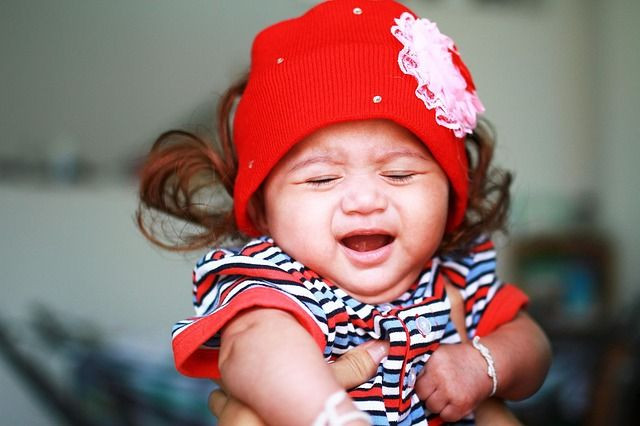Gender Stereotyping May Start Soon After Birth; Babies' Cries Influence Adults' Perception

A recent study published in BMC Psychology suggests that gender stereotypes are pushed onto our children as soon as they utter their first cries out into the world.
Recruiting the unknowing help of 24 3-month-old infants, the researchers recorded their cries and played them back to various groups of volunteers, including their parents. Despite the biological fact that the cries of boys and girls don’t vocally differ until puberty, a fact confirmed with these little helpers, people continuously assumed that high-pitched cries belonged to girls and lower-pitched cries to boys. This bias could be seen when babies naturally cried and when researchers artificially modified their cries. In the case of the latter, the volunteers never guessed the true gender of the baby.
"It is intriguing that gender stereotyping can start as young as three months, with adults attributing degrees of femininity and masculinity to babies solely based on the pitch of their cries,” said lead author Dr. David Reby, of the University of Sussex, England, in a statement.
The presumptions only continued when Reby and his colleagues performed another experiment in which they told volunteers the cry they would soon hear definitely came from a baby of either gender. “Adults who are told, or already know, that a baby with a high-pitched cry is a boy said they thought he was less masculine than average. And baby girls with low-pitched voices are perceived as less feminine,” Reby explained.
While these stereotypes might seem innocuous enough, the researchers noted they can have lasting effects in how we treat our children growing up — from how we dress them to what hobbies and interests we encourage them to pursue in later years. In the case of babies’ cries, they might even matter significantly in the short term. The researchers’ last experiment found that men who heard lower pitched cries from a “boy” assumed he was in greater distress than when they heard the same pitched cry from a “girl.” There was no such effect for women volunteers.
"The finding that men assume that boy babies are in more discomfort than girl babies with the same pitched cry may indicate that this sort of gender stereotyping is more ingrained in men,” said senior author and professor Nicolas Mathevon. “It may even have direct implications for babies' immediate welfare: if a baby girl is in intense discomfort and her cry is high-pitched, her needs might be more easily overlooked when compared with a boy crying at the same pitch.”
The researchers are careful to note that their study is the first to specifically look at gender stereotypes in how we hear our babies cry, meaning that there’s nothing known for certain just yet. They’re eager to pursue more research into it, though. “We now plan to investigate if such stereotypical attributions affect the way babies are treated, and whether parents inadvertently choose different clothes, toys and activities based on the pitch of their babies' cries,” said Reby.
Source: Reby D, Levréro F, Gustafsson E, et al. Sex stereotypes influence adults’ perception of babies’ cries. BMC Psychology. 2016.



























